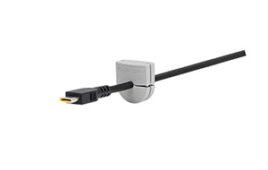Here are some key ways manufacturers can control and improve new product development and introduction processes in the age of IoT.
Scott Reedy, Senior Director of Marketing, Arena Solutions.
The numbers tell the story: global technology spending on the IoT is expected to reach $1.2 trillion in 2022, and IoT devices and services will reach an inflection point of 18% to 20% adoption in 2019. The combination of artificial intelligence (AI), machine learning, and real-time data streams delivered by IoT sensors and networks are going to make IoT business cases extremely compelling in 2019.
Today, IoT capabilities are included in handheld devices, household appliances, and medical implants to monitor patients, to name just a few. The auto industry is all in: enabling greater connectivity in cars to seamlessly gather, monitor, and share data with smart city services and other vehicles. So it’s no surprise that electronics suppliers are racing to deliver more value to support consumer electronics and cars.

IoT capabilities are in handheld devices, household appliances, and medical implants. The auto industry is all in: enabling greater connectivity in cars to seamlessly gather, monitor, and share data with smart city services and other vehicles. Electronics suppliers are racing to deliver more value to support consumer electronics and cars.
Indeed, one might say the manufacturing world has become obsessed with the global network of connected devices and people. Rightfully so, as these performance insights can greatly improve the way we manufacture products.
Consumer electronics manufacturers continue to introduce IoT capabilities because they provide critical knowledge that helps save money, improve product quality by tracking equipment performance, and ultimately satisfies consumers’ growing appetite to connect anytime and anywhere. But these improvements introduce complexity and risks to operations and the overall supply chain as distributed teams struggle to manage terabytes, or even petabytes, of data across multiple systems and platforms. There’s also a growing list of concerns surrounding consumer privacy as companies find new ways to tap into consumer behavior—with and without their knowledge.
IoT, along with increasing regulations and globalization of teams and partners, is changing the landscape of new product development and introduction (NPDI). Product innovators are forced to contend with a deluge of data as they struggle to effectively coordinate dispersed teams to design, validate, and build new products on ever-tighter schedules and budgets.
With greater complexity, we expect to see an increased risk of product quality issues and product launch failures. Manufacturers must seek better ways to manage their design processes, improve the customer experience, and reduce quality defects.
At the same time, original equipment manufacturers (OEMs) and original design manufacturers (ODMs) are constantly improving the way their products integrate with a wide array of IoT protocols (e.g., JSON-LD, Wi-Fi, IPv4/IPv6, Bluetooth) and devices. Many consumer and industrial products are already equipped with wireless technologies that serve as IoT gateways to collect information from products in the field or identify design and quality weaknesses.
IoT-enabled devices generate vast amounts of data for NPDI teams to sort through, analyze, and leverage. With this new IoT paradigm, multidisciplinary design and development-team collaboration early and throughout the entire product lifecycle is essential to product launch success.
Ideally, contributors will be connected and synchronized to the point where:
• The entire product team can work on the same version of the product.
• Each discipline is synchronized with the others wherever they interface.
• Everyone can see the project details, milestones, and deliverables that lead to an on-time launch.
• The product is designed from the ground up to meet regulatory requirements.
• Tests are run at every phase to ensure interoperability and manufacturability.

As devices become more connected and complex, both quality and software issues are more prevalent. As a case in point, more than 20% of recalls in Q3 of 2018 were caused by software.
Here are some key ways manufacturers can control and improve NPDI processes in the age of IoT.
Collaborate around the entire product record
Design teams continue to use a multitude of electrical, mechanical, and software design tools to manage aspects of complex products. But the advent of IoT has tremendously increased the amount of software included in products, increasing the need for interdisciplinary cooperation.
As devices become more connected and complex, both quality and software issues are more prevalent. As a case in point, more than 20% of recalls in Q3 of 2018 were caused by software.
Thus, it’s critical to aggregate the entire product bill of materials (BOM) and associated drawings, software, firmware, and documents to ensure interoperability as early in the design process as possible. Otherwise, product design flaws could go unnoticed until later in the development cycle, increasing costs, delaying product launches, and introducing the type of quality issues that lead to recalls.
Whether companies create and manage BOMs in product lifecycle management (PLM) software solutions, spreadsheets, or even document-centric tools, they need a controlled way to manage a hierarchical, relational BOM. Upstream computer-aided design (CAD) systems also need a way to quickly pass the entire BOM directly to the design or PLM system to eliminate errors and delays.
Additionally, upon release of the final design, the design or PLM system should be able to automatically pass the entire BOM with components, approved manufacturers, and suppliers to the enterprise resource planning (ERP) system to speed planning and production.
Whenever a specification is changed for any component in a complex device, it’s critical the entire team knows which other parts, procedures, and manufacturing processes are affected. With a comprehensive BOM management solution like a PLM, the team can move quickly from requirements to design specification changes to product team approvals using automated routings.
With added IoT design complexity, the best way to manage the entire BOM, from the final assembly down to the lowest level component, is by managing all aspects of the design and associated drawings, specifications, and files in a single system. The system must be easy for all parties to use and understand to support cross-functional collaboration with engineering, purchasing, manufacturing, and less technical supply chain partners like machine shops.
Collaborate transparently between mechanical, electrical, and software designs
Spreadsheets and CAD-centric PLM systems only help OEMs or ODMs manage a portion of the product record and BOM. For example, spreadsheets fail to provide relational connections to associated components, change orders, quality processes, and project information, making it harder to control as more people are added to the review process.
CAD-centric PLM solutions typically focus on a single aspect of the design like mechanical CAD and are not designed to manage software and electrical designs such as printed circuit boards (PCBs). They also lack access by all impacted teams outside of engineering and are not equipped to pass the complete product design to ERP systems at the point of release.
In contrast, today’s product-centric, cloud-based PLM solutions easily aggregate product information, BOMs, and relevant files from mechanical, electrical, and software design tools. Engineering teams can develop native design in CAD and PDM, then transfer information on parts, BOMs, and viewable design files into the PLM system when it’s time to review the design with the rest of the product team. Once the product is approved, simple interfaces make downloading all relevant information to the ERP fast and easy.
Looking ahead: leveraging IoT for continual product design improvement
The untapped potential of IoT is still unfolding. Although information shared with connected devices can produce meaningful insights during production and customer use, it has yet to be fully leveraged to automate continuous product design improvement.
Since there’s a direct correlation between product design and quality, it will also be critical for manufacturers and supply chains to collaborate in a single system with highly controlled, traceable processes and design history.
Although the advantages and potential dangers around IoT will continue to evolve, one thing is certain—the ability to effectively manage these complex product development processes will determine which manufacturers succeed and which flounder in their efforts to get high-quality products to market ahead of the competition.
Arena Solutions
www.arenasolutions.com
Sources:
[1] https://www.forbes.com/sites/louiscolumbus/2018/12/13/2018-roundup-of-internet-of-things-forecasts-and-market-estimates/#531cda7c7d83 [1] https://www.iotforall.com/6-key-iot-trends-and-predictions-for-2019/ [1] https://www.beckershospitalreview.com/supply-chain/software-issues-drive-medical-device-recalls-for-10th-consecutive-quarter-report-finds.htmlFiled Under: IoT • IIoT • Internet of things • Industry 4.0, AI • machine learning, CONNECTIVITY • fieldbuses • networks




